This article has been reviewed according to Science X's editorial process and policies. Editors have highlighted the following attributes while ensuring the content's credibility:
fact-checked
trusted source
proofread
Comet Encke and the Halloween Fireballs of 2023
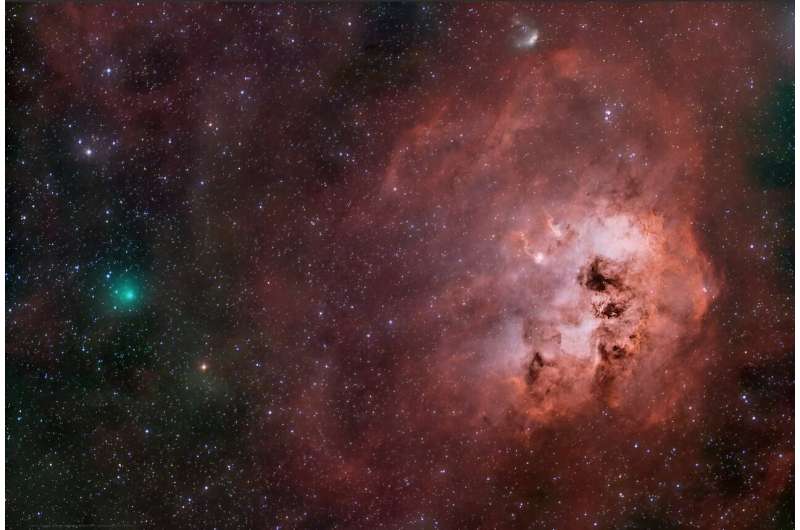
October and November are always great months to watch for meteors, and 2023 is no exception. This year provides a special reason to be vigilant, as the source of the November Taurid Fireballs Comet 2P Encke reaches perihelion for 2023 on October 22nd, at 0.34 Astronomical Units (AU) from the sun.
Unfortunately, Encke's 2023 apparition isn't a favorable one for Earthbound observers. Currently low in the dawn, the comet is only four degrees from the sun when it reaches perihelion on the far side of its orbit, nearly opposite to the Earth.
Encke held the title of the comet with shortest orbital period at 3.3 years until 2013, when the faint comet 311P/PanSTARRS nudged it out of this distinction, with an orbit of just 3.2 years.
The next favorable pass of the comet isn't until July 11th, 2030, at 0.27 AU distant. That isn't far off from the closest the comet can approach us, as it has a MOID (Minimum Orbital Intersection Distance) versus the Earth of 0.17 AU or 25 million kilometers. Comet 2P Encke reaches perihelion inside the orbit of Mercury, and ranges out to an aphelion in the asteroid belt between the orbits of Mars and Jupiter.
Enigmatic tales (tails?) of Comet Encke
Clearly, Comet 2P Encke is an interesting one. Apollo asteroid 2004 TG10 seems to be a fragment related to the comet, perhaps from a breakup catastrophe some 20,000 years ago. The comet is part of a greater swarm known as the Encke (or Taurid) Complex.
Encke and the Taurid Swarm Complex have even been implicated in the 1908 Tunguska Event. This historic event occurred when an asteroid or a fragment of a comet exploded above the Siberian tundra on the morning of June 30.
Encke was also the second short period comet identified. Astronomer Johann Encke noticed in 1819 that several apparitions of the comet were actually one and the same. Observations of the comet may actually stretch back much further in Chinese texts, spanning thousands of years.
We've never seen Comet Encke up close. One mission, NASA's Comet Nucleus Tour (CONTOUR) was once scheduled to intercept the comet. Unfortunately, CONTOUR failed in 2002 shortly after launch. As a denizen of the inner solar system, Encke is in a 7:2 resonance with Jupiter. The comet approaches the inner planets, and may even occasionally grace them with meteor showers as well. NASA's Mercury MESSENGER mission even caught a view of Comet Encke in 2013.
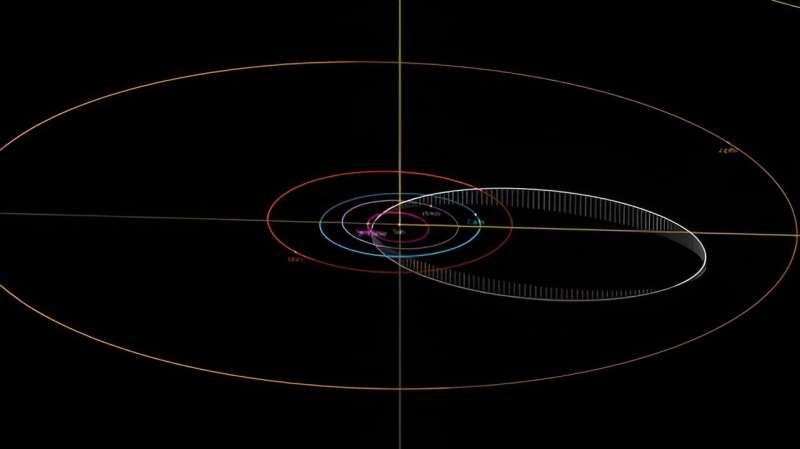
Halloween Fireballs, swarms and storms
The November Taurids produce two streams, both hailing from the constellation of Taurus the Bull. The showers are active over a broad period from late October to mid-November. The twin peaks occur on November 12th (Northern Taurids) and November 5th (Southern Taurids) respectively. Both showers produce low rates of just five meteors per hour, hardly above the background sporadic rate. The notoriety for the pair stems from the high rate of fireballs they produce. Almost every year, we see fireball reports online pick up in late October.
The Taurids have also gained the name of the "Halloween Fireballs" as of late. It's a shame, however, that since 2007, most of North America now shifts back to standard time in early November after October 31. This pushes any Halloween driveway star parties back until later in the evening, when it's finally dark.
This year, the hunter's full moon occurs on October 28, featuring a shallow partial lunar eclipse for Europe and Africa. The good news is, a bright moon shouldn't really bother things when it comes to fireballs. Though the Taurid radiant rises and becomes active around midnight local time, you might just spy some stragglers early on in the evening. These Earth-grazers can be dramatic as they approach us from behind and struggle to catch up, leaving a long trail.
The Taurids seem to have a seven year peak periodicity, equaling once every other orbit for the comet. The Taurids last put on a show in 2015, and again last year in 2022. Could 2023 be another such year? Keep in mind, most meteors are just dust grains, and the fireballs you see are actually no more than pea-sized pellets from Comet Encke.
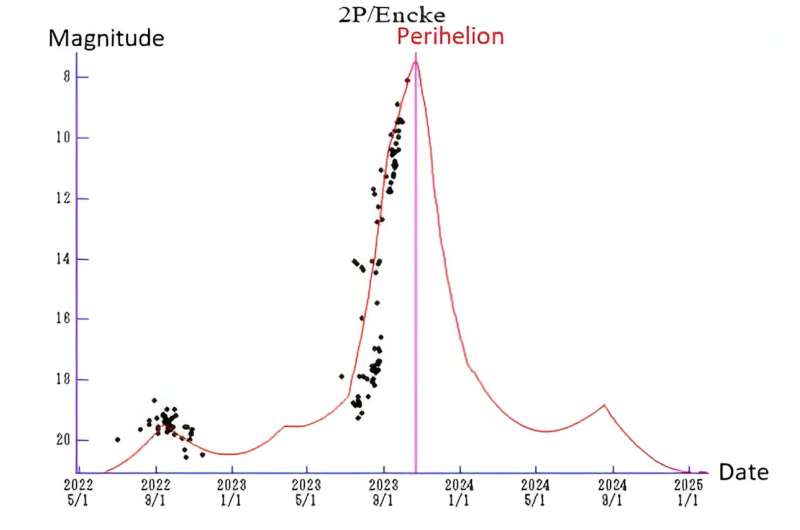
Orionids, Leonids and more
A few other showers are afoot this season. First, the October Orionids peak this coming weekend, with an expected Zenthinal hourly rate (ZHR) of 20 capping out on the morning of Sunday, October 22. Keep in mind, the ZHR is an ideal rate, representing the number of meteors you could expect to see under moonless, dark skies with the radiant directly overhead near the zenith; most observers will see much less. The source of the Orionids is none other than the famous first periodic comet discovered, 1P/Halley.
Also, keep an eye on the Leonids around November 18. To be sure, 2023 is expected to be an "off-year" for the shower, with perhaps just 15 meteors per hour. The Leonids are infamous for producing great outbursts once about every 33 years, which last occurred during the 1998 and 1999 season. This year is intriguing, however, as there's evidence that we may approach an older 1767 trail for the Leonid stream, so we may be in for an uptick in activity.
You can always trace meteors back to the radiants in their respective constellations that they're named after. This makes for quick identification, especially during times of the year when several showers are active; if you can trace a meteor back to Orion, it's an Orionid, Leo, it's a Leonid, etc. There are also random sporadics visible on most given evenings, with a rate topping five or so per hour.
-
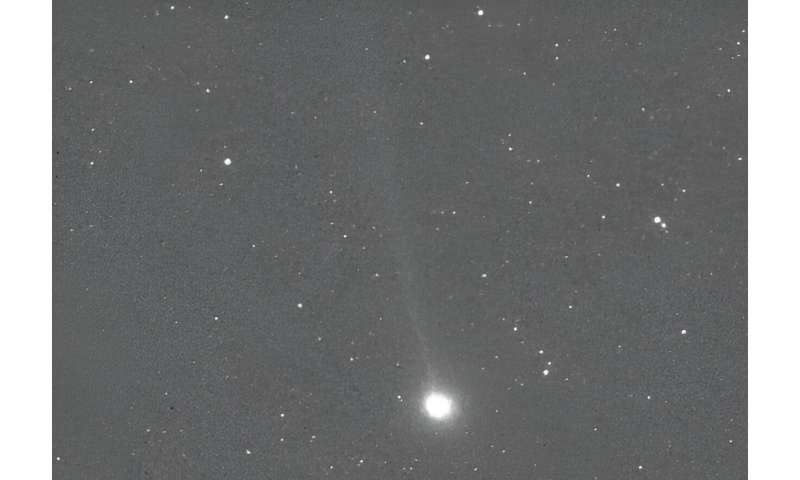
Comet Encke, as seen from NASA’s MESSENGER spacecraft in orbit around Mercury. Credit: NASA/JHUAPL/MESSENGER -
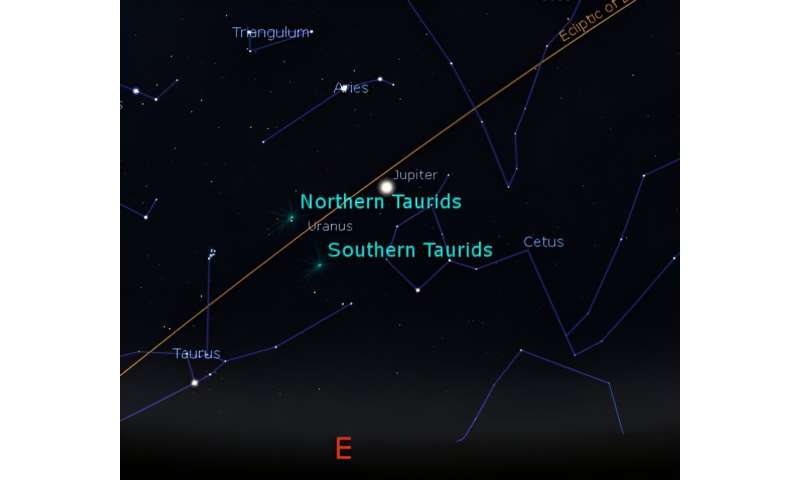
The radiants for the Northern and Southern Taurids, looking to the east post dusk. Credit: Stellarium
Sprinkles of sporadics
Sporadics tend to approach the Earth headlong from along the direction it is heading around the sun, a point known as the antihelion. In late October this sits along the ecliptic plane in the direction of the constellation Taurus, meaning that the Taurid meteors from Comet Encke dominate the scene. The sporadic rate generally picks up again during northern hemisphere spring. There are always lots of minor showers active throughout the year. Meteor streams evolve as they weaken and intensify over time. New streams are even occasionally discovered, as these old debris trails laid down by ancient comets are perturbed by planets and begin to intersect the path of the Earth.
And this is just a prelude to December, which hosts the elusive Andromedids, the Solstice Ursids, and the sure-fire Geminid meteors. One thing is for sure: you won't see anything if you don't get out there and look. If skies are clear, keep an eye out for the Taurid Fireballs over the coming weeks, as harbingers to the winter meteor season.
Provided by Universe Today





















